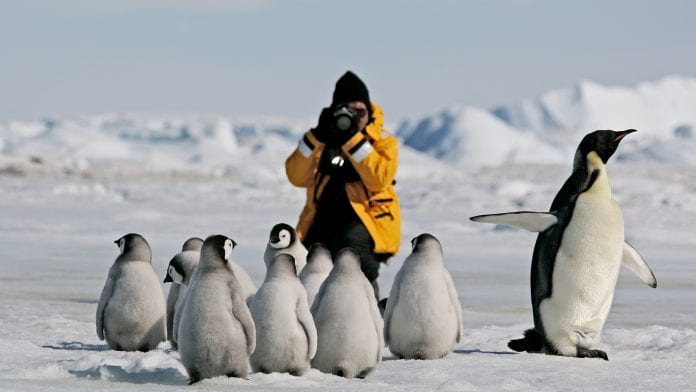
Arctic wildlife is threatened by human pathogens, with scientists warning the risk of mass extinction occurring across the polar ecosystem due to reverse zoonosis.
Zoonosis is the occurrence of diseases being transmitted from animals to humans, and reverse zoonosis is when the human species infects other living beings. This new study has detected bacteria from humans in the genus salmonella and in Antarctic and Sub-Antarctic marine birds, which has further revealed the fragility of polar ecosystems and warns about the risk of massive deaths and extinctions of local fauna populations to occur due to human pathogens.
The complexity of human pathogens
Explorers, whalers, scientists, and lately, tourists, are examples of human collectives that moved to the furthest regions of the planet.
Professor Jacob González-Solís, from the department of evolutionary biology, ecology and environmental sciences of the UB and IRBio, Spain, explains: “Chronology and potential pathways for reverse zoonosis in these ecosystems are complex and difficult to study, but it seems they can be clearly related to the proximity of the fauna to inhabited areas and the presence of research stations.”
The potential transmission of bacteria from humans to marine bird populations in four areas of the Antarctic and Sub-Antarctic ecosystems was comprehensively studied.
The study confirms the first evidence of reverse zoonosis related to the presence of human-origin bacteria salmonella and campylobacter in polar fauna. One of the warning signs was particularly the identification of campylobacter strains, which are resistant to ciprofloxacin and enrofloxacin (common antibiotics in medicine and veterinary).
The detrimental effects of reverse zoonosis
“Finding common campylobacter genotypes in human species or livestock was the definite hint to prove that humans can be introducing pathogens in these regions”, says Marta Cerdà-Cuéllar, researcher at the IRTA-CReSA. “These salmonella and campylobacter strains, which are a common cause for infections in humans and livestock, do not usually cause death outbreaks in wild animals.
“However, the emerging or invasive pathogens that arrive to highly sensitive populations, such as the Antarctic and Sub-Antarctic fauna- could have severe consequences and cause the local collapse and extinction of some populations”.
The study demonstrates the risk of reverse zoonosis is higher in areas that are closer to inhabited areas, such as the Falkland Islands, and probably the Tristan da Cunha archipelago. In this situation, the biological connectivity between Antarctic and Sub-Antarctic communities through marine birds is a factor that would speed up the circulation of zoonotic agents among the ecosystems from different latitudes.
Protecting the arctic wildlife
“Our results show it is easier for humans to introduce pathogen agents in the pristine areas in the Antarctica. As a result, pathogens entering the furthest ecosystems in the Southern Hemisphere could be a serious threat for the future of wildlife.
Therefore, it is essential to adopt biosecurity measures to limit the human impacts in the Antarctica.” concludes Jacob González-Solís.









